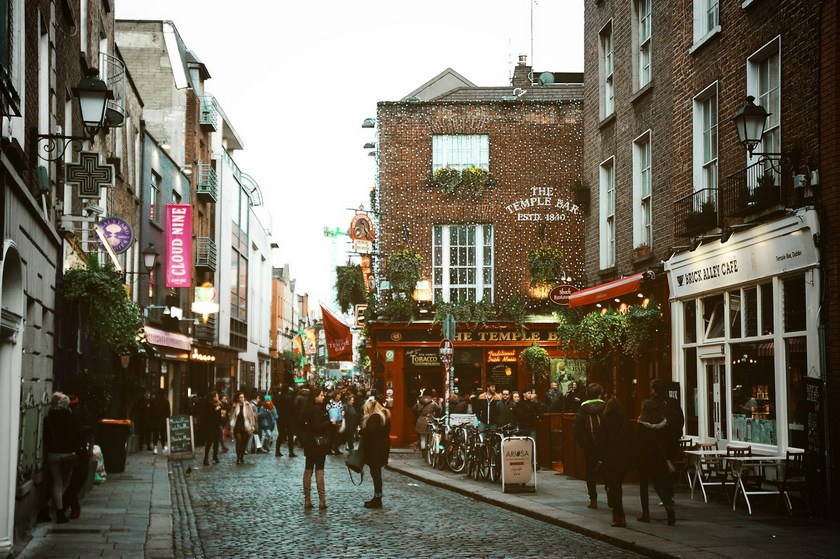Historical Walking Tours of Dublin: From Vikings to Victorians
If you’re eager to delve into a rich tapestry of history, the Historical Walking Tours of Dublin offer a captivating journey through time. These tours provide an immersive experience, tracing the city’s evolution from its Viking origins to its Victorian grandeur. Keep reading to learn more about the fascinating historical walking tours available in Ireland’s capital.
Quick Dublin Overview: Why Tourists Like it
Dublin is a city that seamlessly blends history, culture, and modern vibrancy, making it a popular tourist destination. Here’s why historical walking tours in Dublin are so much sought after:
- Rich history: Dublin’s history spans over a thousand years, from its Viking beginnings to its pivotal role in Irish independence. Visitors can explore historic landmarks like Dublin Castle, Trinity College, and St. Patrick’s Cathedral.
- Vibrant culture: Dublin is renowned for its lively cultural scene, featuring countless pubs, live music, and literary landmarks. The city is the birthplace of iconic writers such as James Joyce and Oscar Wilde, and their spirit is palpable throughout its streets.
- Friendly locals: The warmth and friendliness of Dubliners are legendary. Tourists often engage in meaningful conversations with locals, adding a personal touch to their visit.
- Beautiful architecture: From the elegant Georgian buildings to the charming cobblestone streets of Temple Bar, Dublin’s architecture is both picturesque and historically significant.
- Food and drink: Dublin boasts a thriving food scene, offering everything from traditional Irish dishes to contemporary cuisine. A visit wouldn’t be complete without experiencing a pint of Guinness at the iconic Guinness Storehouse.
- Accessibility: Dublin’s compact design makes it easy for tourists to explore many attractions on foot. Public transportation is efficient, facilitating convenient day trips to scenic locations like the Cliffs of Moher or the stunning Glendalough.
- Festivals and events: The city hosts numerous festivals throughout the year, including St. Patrick’s Day celebrations, cultural festivals, and music events, offering visitors a chance to experience Dublin’s vibrant spirit.
In summary, tourists adore Dublin for its unique blend of history, culture, and hospitality, set against stunning architecture and lively urban life. Let’s dive into the historical landmarks.
Vikings: The Founding Fathers
The narrative of Dublin traces back to the 9th century when Norsemen, commonly known as Vikings, founded a settlement at Wood Quay. These seafaring warriors and traders recognized the strategic significance of Dublin as a hub for commerce and conquest. The Vikings laid the groundwork for Dublin, establishing it as a center for trade and influence in the region. Walking tours often commence here, where participants can explore the remnants of Viking Dublin, including excavations that reveal the layout of the early settlement, offering insight into the lives of these pioneers.
Medieval Dublin: The Anglo-Norman Influence
Following the Viking era, Dublin came under the control of the Anglo-Normans after the invasion of Ireland in 1169. This period witnessed the construction of many of Dublin’s most iconic medieval structures, including Dublin Castle and Christ Church Cathedral. The Anglo-Normans introduced new architectural styles and a feudal system that reshaped the city’s landscape and governance. Walking tours highlight these influences as you navigate through the medieval quarter, showcasing the blend of Norse and Norman elements that defined the city’s development during this era.
The Georgian Era: Dublin’s Golden Age
The 18th century marked a period of remarkable growth and prosperity for Dublin. The city underwent a transformation during the Georgian era, characterized by elegant architecture, wide streets, and magnificent public buildings. This era is often referred to as Dublin’s Golden Age.

Tour participants can stroll through some of the most beautiful Georgian squares, such as St. Stephen’s Green and Merrion Square, where symmetrical facades and decorative ironwork of the period’s townhouses provide a glimpse into the lives of the wealthy elite who shaped the city’s cultural and social life. The tour also examines the stark contrasts between wealth and poverty in Georgian Dublin.
The Victorian Era: Industrialisation and Expansion
As Dublin transitioned into the 19th century, it experienced significant transformations due to the Industrial Revolution. The Victorian era ushered in a wave of industrialization and expansion, with the construction of new bridges, railways, and factories that altered the city’s landscape. These walking tours continue into this period, exploring how Victorian values and innovations influenced Dublin’s architecture and urban planning. Highlights include the iconic Ha’penny Bridge, built in 1816, along with various public works developed to accommodate the growing population. The tours also address social challenges of the epoch, including the ramifications of the Great Famine and the emergence of political movements aimed at rectifying the era’s inequities.
Modern Dublin: The Legacy of the Past
As the walking tour concludes, visitors gain insights into how Dublin’s historical legacy persistently shapes the contemporary city. From ongoing preservation of historical buildings to efforts that harmonize heritage with urban development, Dublin today stands as a city where the past and present coexist. Tour guides often share stories about significant historical events, such as the Easter Rising of 1916, which have left indelible marks on the city’s identity, influencing everything from its architecture to its cultural life.




